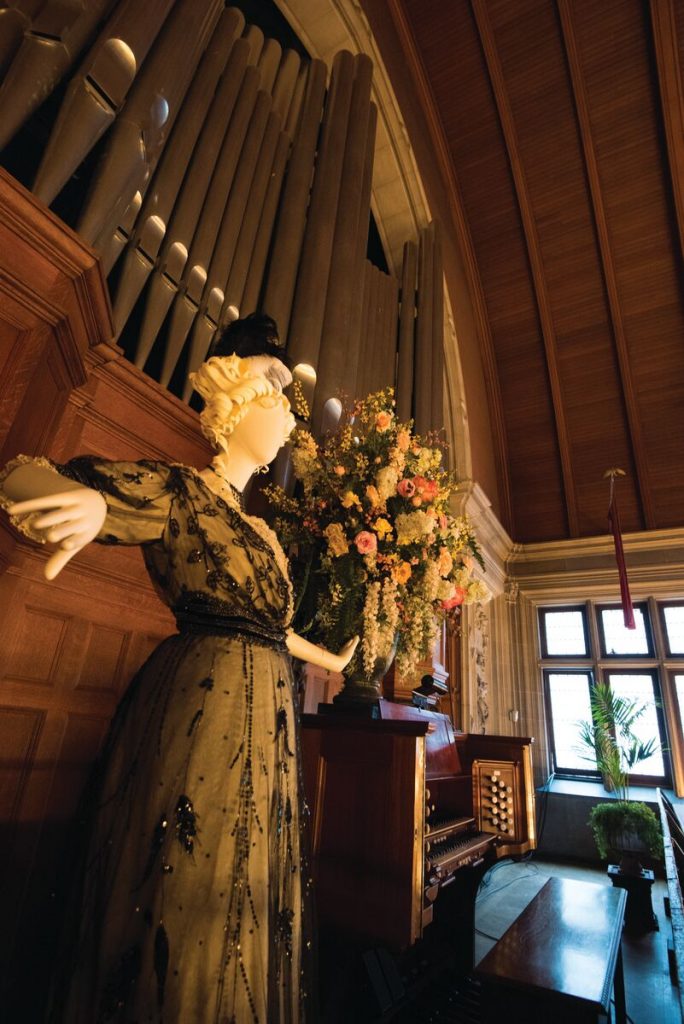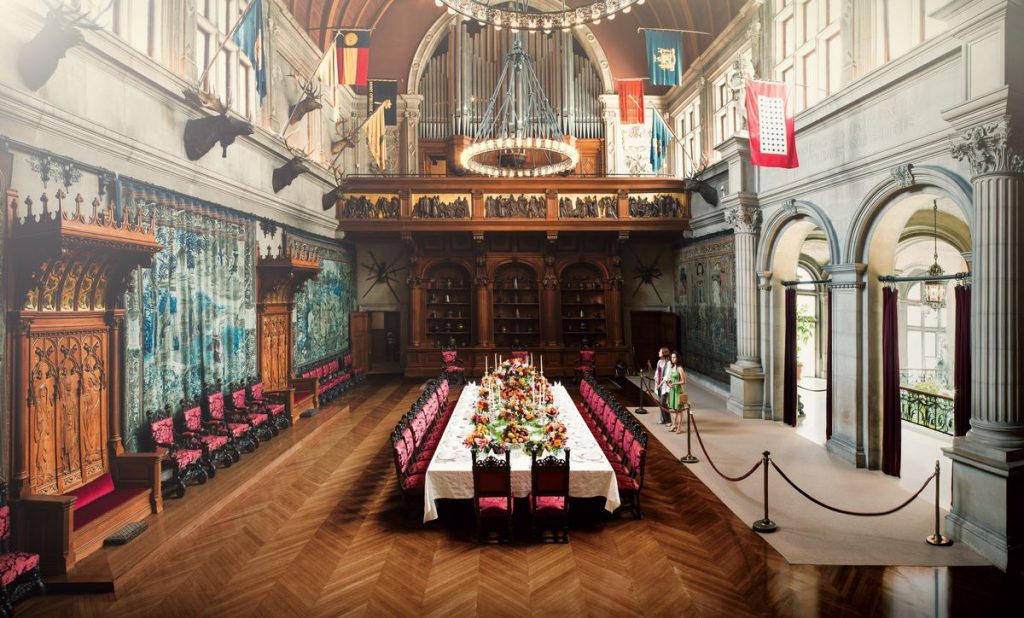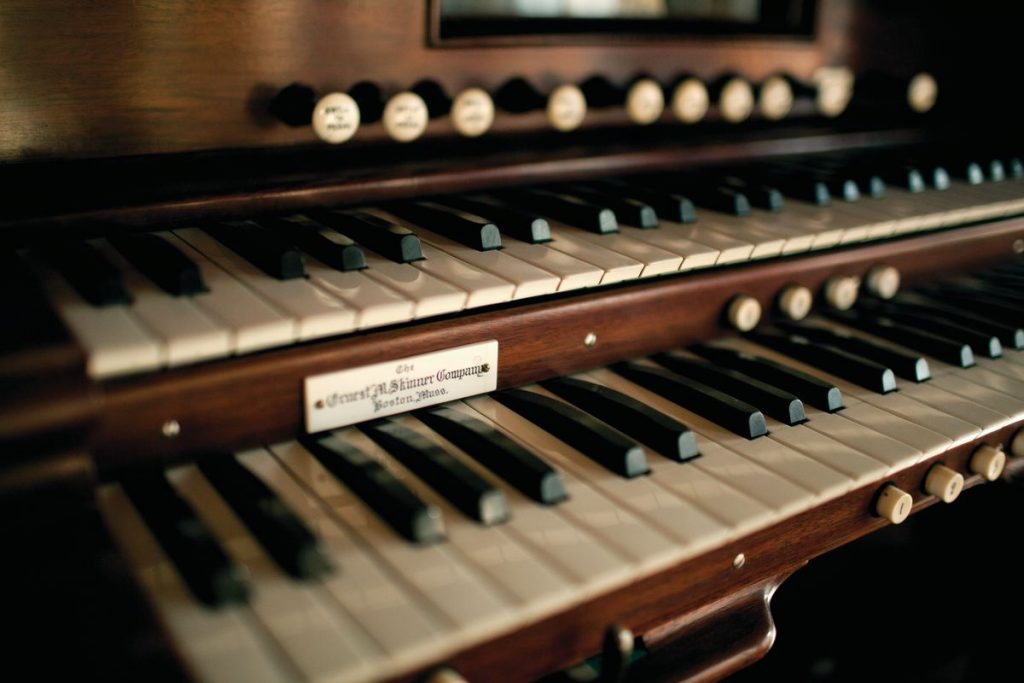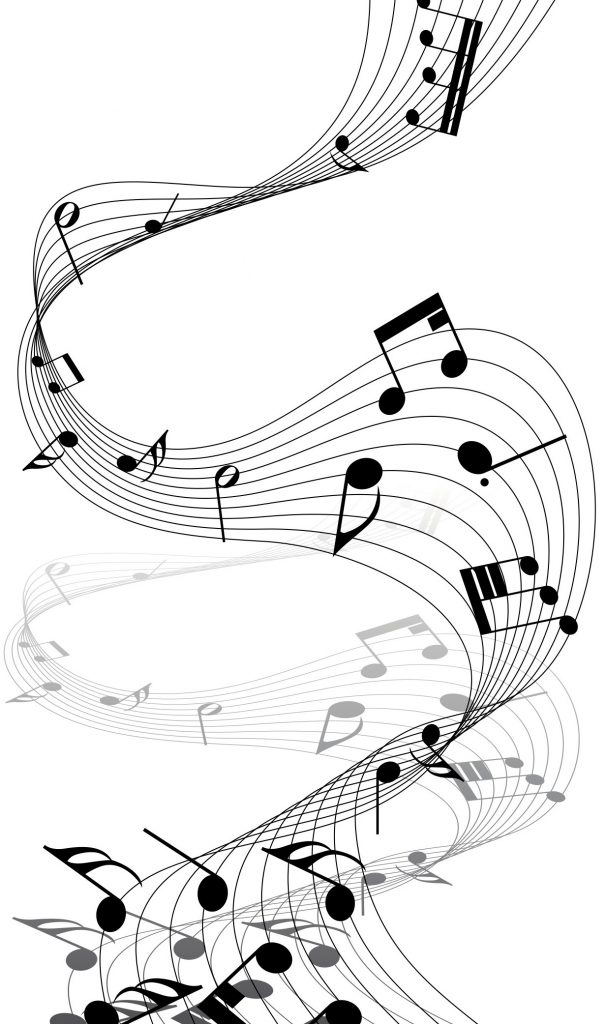George & Edith Vanderbilt filled their home with music – and it might be the key to modern-day sleep challenges!
 During the lifetimes of George and Edith Vanderbilt, music often drifted through the hallways of the largest home in America. While it served as entertainment for the Vanderbilt family and their guests, it may have unknowingly also improved their sleep.
During the lifetimes of George and Edith Vanderbilt, music often drifted through the hallways of the largest home in America. While it served as entertainment for the Vanderbilt family and their guests, it may have unknowingly also improved their sleep.
George Vanderbilt conceived of and created the iconic Biltmore in the late 1800s in Asheville, North Carolina. During the building of the home – and throughout his life – he filled it with a bounty of priceless treasures from his travels around the world. But as beautiful as tapestries, leather-bound books and priceless objects of art and paintings are, Biltmore would have felt cold and unfeeling without music enhancing its passageways.
Instead, piano playing, singing, and even orchestras, kept Biltmore’s atmosphere animated and charming during the day and into the evenings.
“Music has been used as a healing therapy for most of human history,” says Dr. Breus, The Sleep Doctor. “Ancient Arabic cultures had musicians working alongside physicians. The Greeks used music to treat mental illness. After WWII, musicians were brought to US hospitals to aid the healing of soldiers’ physical and emotional trauma. And modern scientific research has measured several benefits of music as a therapeutic tool for emotional health.”
The beginning notes of a lifelong love of music for George Vanderbilt
George Vanderbilt, like many young men in the 19th century, took dancing lessons as a child. While it appears he enjoyed dancing, his love of music is evident in a journal entry from his 13th year. “I went to dancing school today and they had a German [dance]. Although I did not dance, I enjoyed it just as much!”
 At 22 years old, George made a donation of $500 to his home parish in New York specifically earmarked for purchasing music. George adored concerts and showcased his love for them through a personal scrapbook. He filled it with copies of musical programs from every concert he attended from 1892 to 1897. In 1901, the Asheville Citizen remarked of George Vanderbilt, “Mr. George Vanderbilt is the musical member of his family…” This seems to have been true of George throughout his lifetime.
At 22 years old, George made a donation of $500 to his home parish in New York specifically earmarked for purchasing music. George adored concerts and showcased his love for them through a personal scrapbook. He filled it with copies of musical programs from every concert he attended from 1892 to 1897. In 1901, the Asheville Citizen remarked of George Vanderbilt, “Mr. George Vanderbilt is the musical member of his family…” This seems to have been true of George throughout his lifetime.
During the design of Biltmore, he urged architect Richard Morris Hunt to create special spaces for music, though many never came to fruition during his lifetime. There’s a Music Room on the first floor of the home, which secretly served as the depository of works of art from the National Gallery of Art to protect them during World War II. It was finally completed in the 1970s. There’s also an organ loft in the Banquet Hall, although it didn’t contain an organ until 1995. Oral histories detail a piano being played from the organ loft during the time the Vanderbilts lived there.
 Among George and Edith’s personal friends were musicians who showcased their talents during their visits to Biltmore. Cortlandt Palmer visited Biltmore in January 1894 (this is before Biltmore formally opened on Christmas Eve in 1895). George’s cousin, and close friend, Clarence Barker had notable music talent and spent time at Biltmore House.
Among George and Edith’s personal friends were musicians who showcased their talents during their visits to Biltmore. Cortlandt Palmer visited Biltmore in January 1894 (this is before Biltmore formally opened on Christmas Eve in 1895). George’s cousin, and close friend, Clarence Barker had notable music talent and spent time at Biltmore House.
George and Edith also combined music and philanthropy as they hosted concerts to benefit various organizations. One of those took place on April 28, 1905, when the Pittsburgh Orchestra performed at Biltmore to benefit the hospital in Biltmore Village. The Orchestra performed works such as Wagner’s Flying Dutchman and Prelude: Mesitersinger, Beethoven’s Fifth Symphony in C Minor, Gounod’s March of the Marionettes, Schumann’s Troumerie, and Schubert’s Still wie die Nacht and The Eric King. Mme. Gadski was the featured soloist.
It’s not surprising that George’s interest in music was a common chord in his life, until his sudden and unexpected death in March of 1914. In January of that year, George rented a piano for two months to place in his and Edith’s home on 1612 K Street in Washington, D.C., so as not to be without music during their visits.
Fostering a legacy from their love of music
Along with filling their home with music, the Vanderbilts took an active role in fostering musical talent. They were introduced to Elizabeth Mayo Dodge in 1898 when she sang at the Grand Opera House in Asheville. The next night, December 8, she performed at Biltmore, accompanied by the Morgan String Quartet of New York. Edith Vanderbilt fell in love with Dodge’s voice and took the young woman under her wing. She sent her to Europe and paid for her to study voice and perform for seven years. In the same fashion in 1901, Edith wrote to local music teachers asking for a recommendation of a flute instructor. She had met two musically gifted students interested in joining the orchestra, and she paved the way for them to have expert instruction.
Musical performances of all sorts have taken place throughout Biltmore history. Orchestra music was regularly a part of the Christmas celebration at Biltmore. In the early years, the orchestra at the Asheville School for Music and Dramatic Art performed. That tradition continues today, especially in the holiday months, when a variety of choirs and musical groups are invited to play in the winter garden at different intervals. And it’s no surprise that during one of Biltmore’s biggest bashes for Cornelia Vanderbilt’s (George and Edith’s only child) 22nd birthday party, music filled the air performed by The Garber Davis Orchestra.
Listening to music – especially slow music – can lead to better sleep
According to the Better Sleep Council, classical music (along with New Age, Native American, or Celtic songs) with rhythms of approx. 60 – 80 beats per minute, can effectively slow your heart rate and breathing, lower blood pressure and induce muscle relaxation. Studies show that older adults who listen to 45 minutes of relaxing music before going to bed fall asleep faster, sleep longer and wake up less during the night. Another study shows that listening to music before bed can help prevent insomnia, which is defined as the inability to sleep without interruption.
Calming music is equally effective for students. In one study, researchers divided 94 students (between the ages of 19 and 28) into three groups. All of the participants were dealing with sleep complaints including fatigue from lack of sleep, depression and problems in daytime functioning. The first group listened to 45 minutes of classical music before bed. The second group listened to 45 minutes of an audiobook. The third group didn’t listen to anything. What they found is that depressive symptoms decreased significantly among those who listened to music but not those listening to audiobooks.
“The key is choosing the right music for the time of day or night for the desired effects,” says Dr. Breus. “If you’re listening to music that relaxes you before bed, you’re essentially helping to ‘tune’ your body to sleep mode, both physically and psychologically.”
6 songs to add to your nightly playlist for better sleep
If you’re struggling to get the sleep you need to stay healthy, consider listening to music as a lifestyle choice. Some studies indicate that it may take up to three weeks of listening to music for 45 minutes before bed to see noticeable improvement. Sleep researchers say slow tunes are best for helping relax the mind and body for a healthy night’s sleep.
“I recommend to my patients they opt for music without words, at bedtime,” says Dr. Breus. “Your mind can’t help but follow along, and lyrics can be mentally stimulating. You want to give those cognitive centers of your brain a rest, not light them up.”
Here are some song suggestions for your nightly playlist, as suggested by The Better Sleep Council:
- Weightless – The British Academy of Sound Therapy says it’s the perfect song to put you to sleep. The Academy collaborated with the Manchester band Marconi Union to produce this relaxing song and because there’s no repeated melody, the brain doesn’t try to predict the next sounds coming. According to research from Mindlab International, “Weightless” reduces anxiety by 65%.
- Reverie – French for dream, this classical piece was composed by Debussy early in his career. The beautiful piano sounds are gentle and meditative.
- Moonlight Sonata – The first movement of Beethoven’s sonata is a masterful piece, hauntingly played on the piano. As the name suggests, this music is meant to be played at night, to soothe the soul after a long day.
- Delta Wave Music – This New Age music piece is specifically created to induce delta waves in the brain to help us ease into sleep. And it continues to play for 8 hours!
- Celtic Music – Played with a harp and flute, it’s dreamy and soothing.
- Native American Flutes – Two haunting flutes travel through this mystical piece composed by Peder B. Helland for more than 3 hours.
Rest well & wake up ready to go!
Better sleep gives rise to better mornings, bringing your goals into focus and dreams within reach. Hungry for more sleep info? Dig into these posts:
- Bring the flavors of Biltmore home to your breakfast table
- Bedroom design inspiration, thanks to Biltmore
- The beautiful bedroom colors of Biltmore
Eager for more sleep info you can really use?
Join our community
Facebook
and let's continue the conversation.
We'd love to hear what you have to say!
This blog does not provide medical advice. It is intended for general informational purposes only and does not address individual circumstances. It is not a substitute for professional medical advice, diagnosis or treatment and should not be relied on to make decisions about your health. Never ignore professional medical advice in seeking treatment because of something you have read on Restonic.com. If you think you may have a medical emergency, immediately call your doctor or dial 911.

